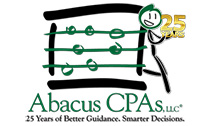Introduction

Understanding the various tax forms and their specific purposes is essential for individuals and businesses alike. Four commonly encountered tax forms are the W-2, W-4, W-9, and 1099 forms. Each form serves a unique function and must be used appropriately to ensure compliance with tax regulations. In this article, we will delve into the differences between these forms and provide insights into when and how they should be utilized.
What is a W-4?
A W-4 is a tax form filled out by employees to indicate to employers how much federal income tax should be withheld from their paychecks. Employees will fill out their tax information on the form, such as their filing status and allowances claimed. An employee’s allowances claimed will depend on the employee’s tax situation, such as their number of dependents, filing status, and amount of income earned.
Employees can adjust their tax withheld by adjusting allowances claimed or having additional federal income tax withheld.
Employers use the information an employee puts on their W-4 to determine the correct amount to withhold from employees’ paychecks while processing payroll. The federal income tax withheld by an employer will be the employer’s responsibility to deposit to the IRS on an employee’s behalf. Employers must have W-4s before it is time to process payroll. As a result, employers will have employees fill out W-4s during their first week to give their payroll team ample time to process their payroll.
What is a W-2?
A W-2 form is an essential document for reporting employees’ wages and tax withholdings. It is provided by employers to their employees at the end of each tax year. The W-2 form includes details such as the employee’s annual earnings, Social Security and Medicare taxes withheld, and other tax-related information. Employees use this form when filing their individual income tax returns.
The W-2 form serves multiple purposes. Firstly, it gives employees a summary of their earnings and income taxes withheld throughout the year. This information is vital for accurately reporting income and ensuring compliance with tax regulations. Additionally, the W-2 form is submitted to the Social Security Administration to keep a record of an employee’s earnings for determining Social Security benefits and to the IRS to match your tax return filing.
What is a W-9?
A W-9 form collects information from individuals or businesses that are not employees but provide services to another party. This form is typically completed by independent contractors, freelancers, or vendors. The purpose of the W-9 form is to gather the taxpayer’s identification number (such as a Social Security number or an Employer Identification Number) and other necessary details. The recipient of the W-9 form uses the information provided to prepare and issue a 1099-MISC form, if applicable, at the end of the tax year.
When a payer engages in the services of an independent contractor, the payer needs to ensure they have accurate information to report payments made to the contractor to the IRS. The W-9 form collects this information, including the contractor’s name, address, and taxpayer identification number. This information is then used to prepare the 1099 forms for tax reporting purposes.
What is a 1099 Form?
A 1099 form reports various types of income other than wages, salaries, and tips. Depending on the nature of the income, there are different types of 1099 forms, such as 1099-MISC, 1099-INT, 1099-NEC, and 1099-DIV. For example, the 1099-NEC form reports payments made to independent contractors and other miscellaneous income. The 1099 form is also issued to recipients by the entities or individuals who made the payments, allowing them to report the income accurately on their tax returns.
The purpose of the 1099 form is to ensure transparency and accuracy in reporting income that falls outside the scope of traditional employment. By issuing a 1099 form, the payer notifies both the recipient and the IRS of the income received by the recipient during the tax year. This allows the IRS to match the income reported on the recipient’s tax return with the income reported by the payer.
When to Use Each Form

Knowing when to use each form is crucial for compliance with tax regulations. Here’s a breakdown of when to use W-2, W-9, W-4, and 1099 forms:
W-2: Employers provide a W-2 form to their employees by January 31st of each year. Employees use this form to report their wages, salary, and tax withholdings when filing their individual income tax returns. Employers are required to issue W-2 forms to employees who earned at least $600 in wages during the tax year.
W-9: A W-9 form should be completed by independent contractors, freelancers, or vendors who are not employees but provide services to another party. This form is typically submitted to the payer before any payments are made. The information provided on the W-9 form is then used to prepare and issue a 1099-NEC form if the total payment to the recipient is $600 or more during the tax year.
W-4: When starting a new job, you should use a W-4 form to indicate your employer’s federal income tax withholding preferences. Additionally, suppose you experience significant life changes, such as getting married, having a child, or changing your financial situation. In that case, consider updating your W-4 to reflect the appropriate withholding allowances. It’s essential to keep your W-4 up to date to ensure accurate tax withholding throughout the year.
1099 Forms: Various types of 1099 forms are used to report different types of income. For example, if you pay independent contractors or receive rent income, you may need to issue a 1099-NEC form. It is essential to familiarize yourself with the requirements for each type of 1099 form and ensure timely filing with the appropriate tax authorities.
How Abacus Can Help

Understanding the requirements and ensuring compliance with tax forms can be challenging. Abacus CPAs can provide valuable assistance in navigating tax form obligations. Here’s how Abacus CPAs can help:
Expert Guidance: Abacus CPAs has a team of experienced professionals who stay up-to-date with the latest tax regulations. They can provide personalized guidance on when and how to use W-2, W-9, W-4, and 1099 forms based on your specific business needs. Their expertise ensures accuracy and compliance with tax regulations.
Preparation and Filing: Abacus CPAs can handle the preparation and filing of W-2, W-9, W-4, and 1099 forms on your behalf. They will gather the necessary information, accurately complete the forms, and ensure timely submission to the appropriate tax authorities. This saves you time and minimizes the risk of errors or omissions.
Compliance Assistance: Abacus CPAs will ensure you follow all tax form requirements, reducing the risk of penalties or audits. They can review your financial records, verify the accuracy of the information, and advise you on any necessary adjustments or additional filings.
Peace of Mind: By entrusting your tax form requirements to Abacus CPAs, you can focus on running your business while having peace of mind that your tax obligations are being handled professionally and accurately.
Conclusion
Understanding the purpose and importance of W-2, W-9, W-4, and 1099 forms is essential for employers and individuals. By partnering with Abacus CPAs, you can rely on their expertise and guidance to ensure compliance with tax form requirements. Simplify your tax obligations and let Abacus CPAs assist you in navigating the intricacies of W-2, W-9, W-4, and 1099 forms, allowing you to focus on your core business activities. With their comprehensive services, you can have confidence in the accuracy and timeliness of your tax form filings, ensuring a smooth tax season and minimizing any potential risks or issues.
FAQ
A W-2 form is used by employers to report an employee’s annual wages and the amount of taxes withheld from their paycheck.
A W-4 form is filled out by an employee to inform their employer about the amount of federal income tax to withhold from their wages.
A W-9 form is typically used by freelancers, independent contractors, and self-employed individuals to provide their taxpayer identification number (TIN) to clients or businesses that will be paying them.
A 1099 form is used to report income earned by individuals who are not employees, such as independent contractors, freelancers, or those receiving rental income.
A W-2 form is used to report wages and taxes withheld for employees, while a 1099 form is used to report income earned by independent contractors and self-employed individuals who are not employees.
Yes, you can switch from being an employee to an independent contractor, but it will have implications for how you are classified for tax purposes and how you report your income.
Abacus is a software tool that can assist individuals and businesses in navigating the complexities of tax form requirements. It provides guidance, automates calculations, and ensures compliance with tax regulations.
Yes, Abacus can help you determine the appropriate amount to withhold from your wages by taking into account factors such as your income, filing status, and tax deductions.
Yes, it is generally required for independent contractors and self-employed individuals to fill out a W-9 form when working with clients or businesses that need their taxpayer identification information.
You need to file a 1099 form for each independent contractor or freelancer you have paid at least $600 in the tax year. The form must be submitted to the IRS by the end of January each year, and a copy must be provided to the recipient by the same deadline.









